How to Delete Multiple Transactions in QuickBooks Online
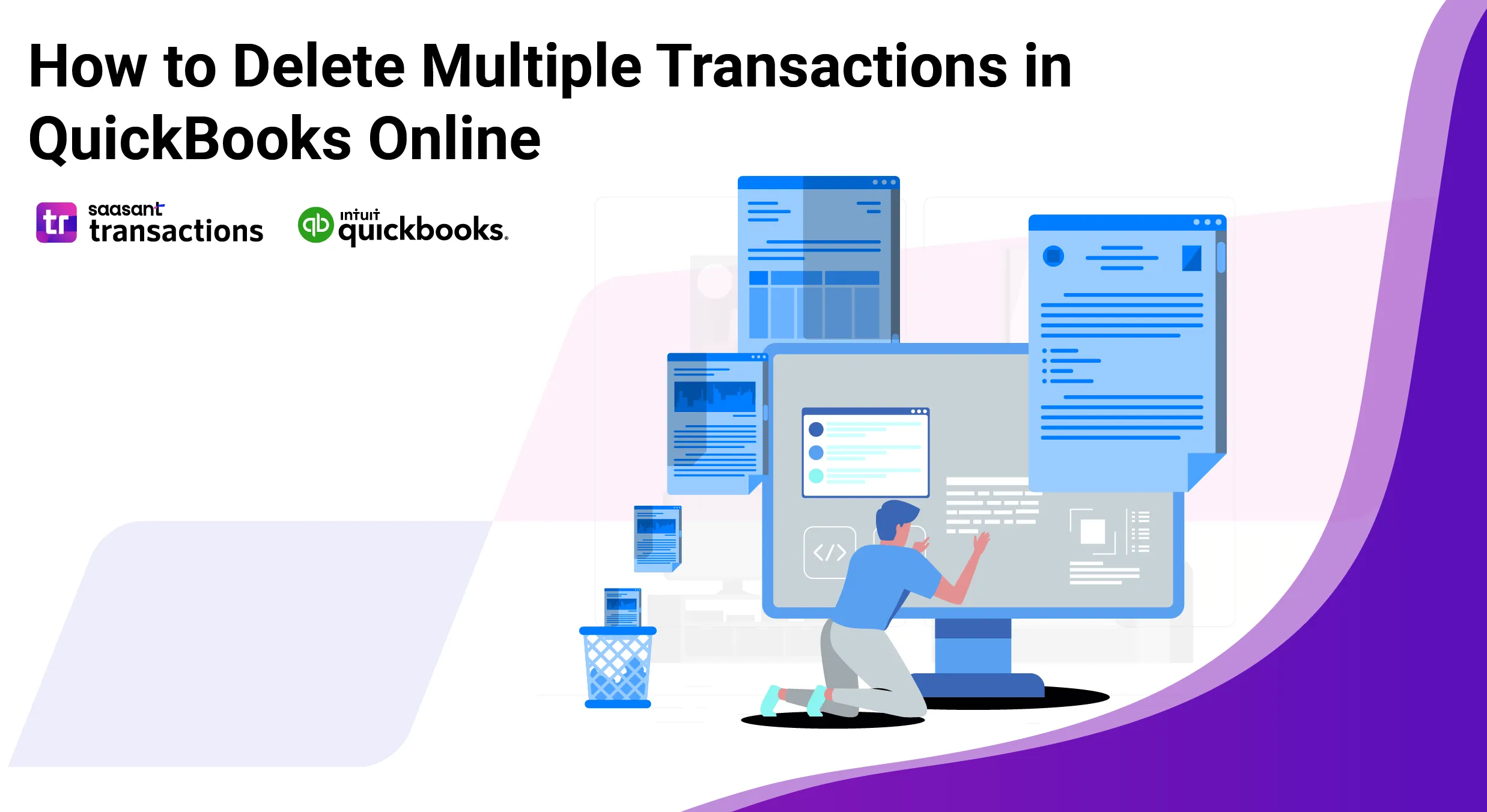
Managing your financial records in QuickBooks Online is crucial for maintaining accuracy, and sometimes, that means needing to delete multiple Transactions. While doing this manually can be tedious, there’s a more efficient way to handle it. SaasAnt Transactions, with a 4.9-star rating from over 4000 users, offers a user-friendly solution that allows you to delete Transactions in bulk while keeping your data secure.
In this guide, we’ll walk you through how to delete multiple Transactions in QuickBooks Online using SaasAnt Transactions, ensuring your records remain tidy and up-to-date.
Contents
How to Delete Multiple Transactions in QuickBooks Online - Quick Instructions
How to Delete Transactions in QuickBooks Online: Step-by-Step Guide
Conclusion
FAQ
How to Delete Multiple Transactions in QuickBooks Online - Quick Instructions
Connect SaasAnt Transactions with QuickBooks
Select the required entity.
Use the advanced filter to search.
Bulk delete
How to Delete Transactions in QuickBooks Online: Step-by-Step Guide
Step 1: Connect with SaasAnt Transactions
Find SaasAnt Transactions in the QuickBooks App Store and connect it to your QuickBooks account. This certified, secure app keeps your data safe and well-managed.
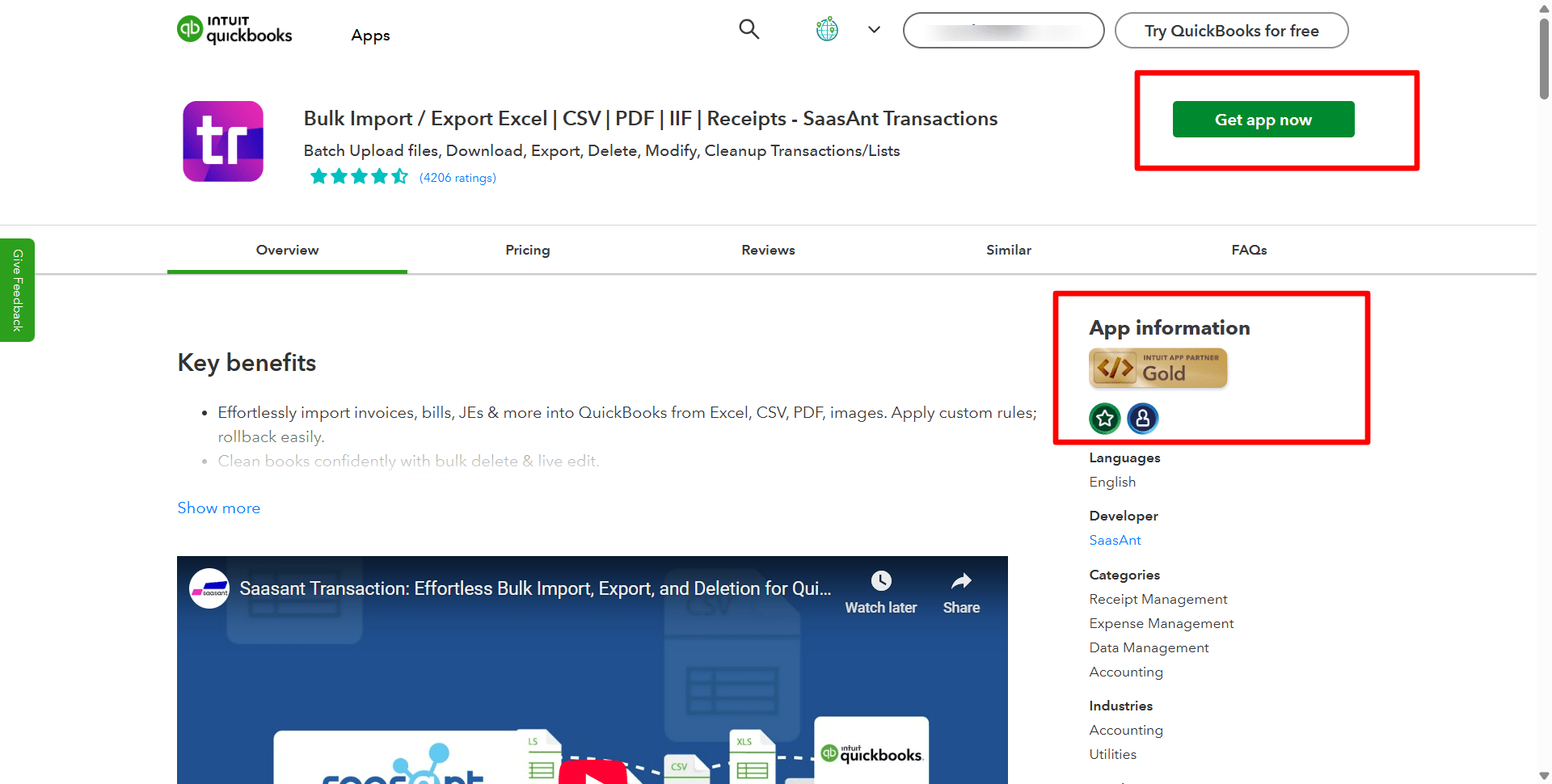
Step 2: Filter by Date
Go to SaasAnt Transactions Dashboard -> Delete.
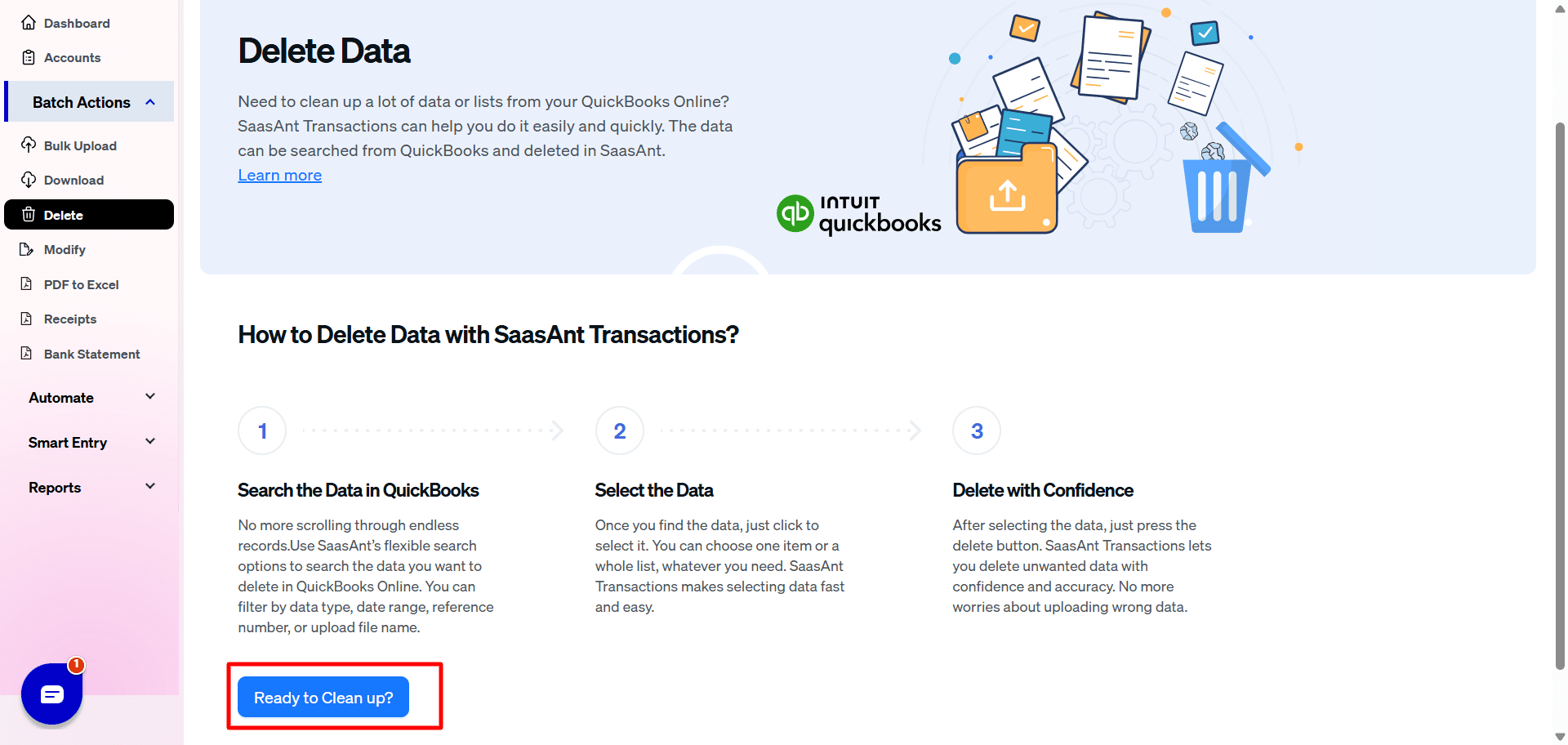
Select "Delete by Searching" if you want to delete using date type and date range. Select whether you want to delete based on the created date, transaction date, or last updated date, and select a date range.
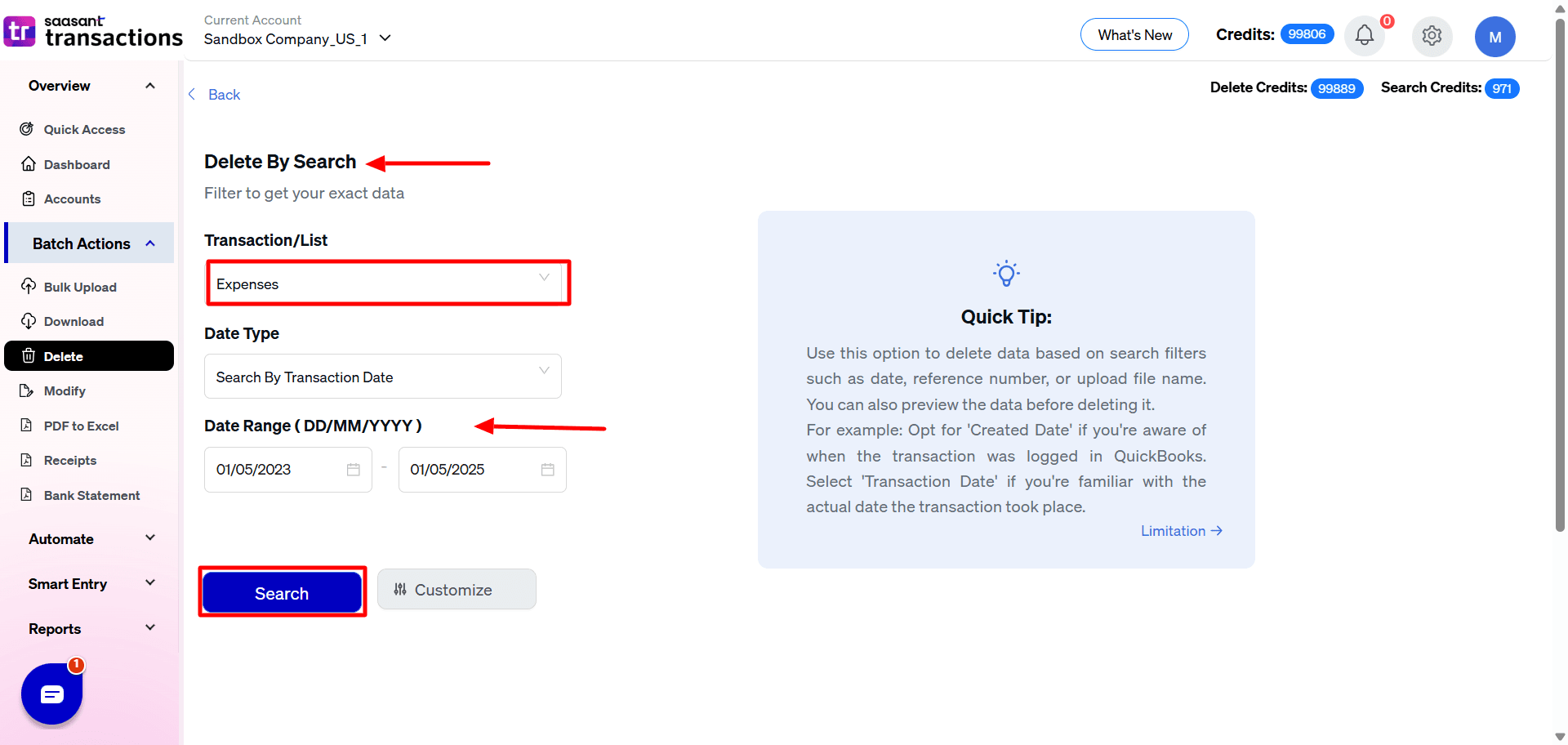
Step 3: Bulk Delete
A list of chosen Transactions for the selected date type and range will be displayed. Click on delete. You can also uncheck the check box of a particular Transaction if you wish not to delete it.
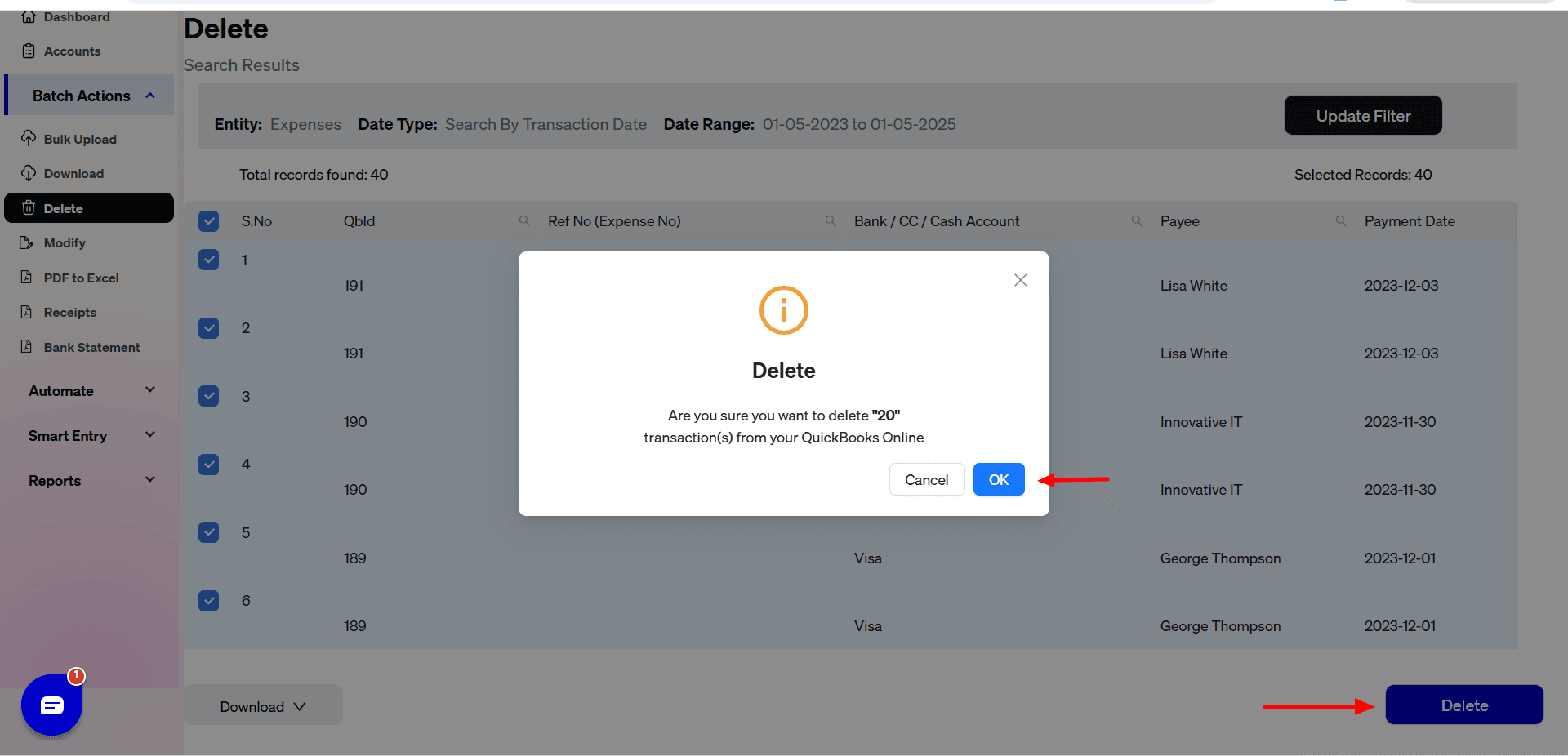
Important: Always back up your Transactions before deleting them. You can use the “Download” option to create a backup copy.

Note: SaasAnt allows you to create backups and retains deleted data in history for a limited period, in case you need it again.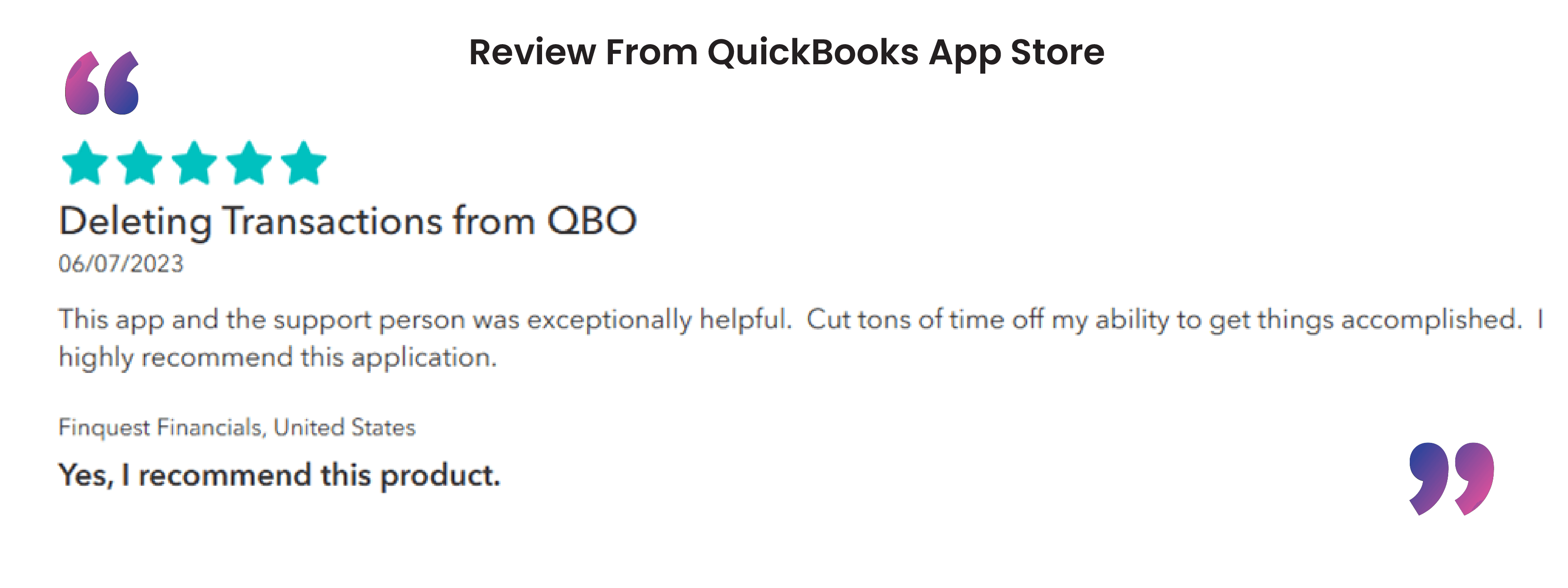
Sound Familiar? Why You’re Really Here
Let's be honest, you didn’t search for "how to delete multiple transactions in QuickBooks" because everything is going perfectly. You’re here because you're facing a cleanup job that feels overwhelming, and doing it one-by-one isn't an option.
You're probably one of these people:
The Business Owner whose bank feed just went haywire, creating hundreds of duplicate transactions from Stripe, Shopify, or your bank. You need to fix it now before your books become a complete mess.
The Bookkeeper or Accountant who just inherited a client's "messy books." You've discovered a year's worth of junk in the "Undeposited Funds" or "Uncategorized Expenses" account and need to perform a major QuickBooks cleanup.
The Long-Time User whose lists are completely out of control. You're tired of scrolling through inactive customers, old vendors, and discontinued products just to create an invoice. You just want to remove old data and streamline your work.
Whatever your story, you're looking for a reset button, a magic wand�—something that lets you batch delete, bulk remove, or clean up your books fast. You've hit a wall with QuickBooks' built-in features, and now you need a real solution.
Beyond 'Delete': What You're Really Trying to Do
While "delete" is the word you searched for, it's often a simple term for a more specific goal. Understanding your true objective is key to getting the job done right without accidentally damaging your financial data.
Most likely, you're trying to:
Fix Errors the Right Way: You don't just want to remove a duplicate invoice; you want to void it. Voiding keeps a record for your audit trail but zeros out the amount, which is what your accountant wants to see.
Clean Up Your Lists: When you can't get rid of an old customer or account, the action you need is to Make Inactive. This hides them from your daily view, decluttering your workspace while keeping your historical records intact.
Handle a Massive Reclassification: For that giant "Miscellaneous" account, your goal isn't to delete the transactions, but to batch reclassify them to their correct expense categories.
Start Completely Fresh: In the most extreme cases, you're looking to purge the entire company file and start over from scratch after a major setup mistake.
Pinpointing your exact goal helps you find the right tool and method.
How to Actually Bulk Delete & Clean Up Your QuickBooks
Okay, so we’ve established that doing this manually is a non-starter. Clicking one-by-one is a recipe for frustration and wasted hours. You need a tool built for the job.
This is where a dedicated bulk transaction tool like SaasAnt Transactions becomes your secret weapon. Instead of hunting and pecking, it allows you to take control of your data in a way that QuickBooks natively can't.
Here’s how it solves the problems we talked about:
Find Exactly What You Need to Remove: Forget endless scrolling. SaasAnt lets you use advanced filters to isolate the exact data you want to delete. You can filter by date range, dollar amount, account, customer, or even a specific word in the memo field—perfect for finding all those "sync error" duplicates.
Delete, Void, or Inactivate in One Click: Once you've selected your transactions or list items, you can remove them all at once. Better yet, SaasAnt is smart. It automatically follows QuickBooks’ rules and Voids, Deletes, or makes Inactive based on the data type.
Fix and Re-upload Data: Sometimes you don't want to just delete—you want to fix. SaasAnt lets you download your filtered data to an Excel or CSV file, make mass changes (like reclassifying a year's worth of expenses), and then upload the corrected file right back into QuickBooks.
It transforms a multi-day nightmare of manual clicks into a focused, minutes-long task, giving you the power to finally clean up your books.
What You Can Clean Up with SaasAnt Transactions
SaasAnt provides comprehensive coverage across virtually every data type in QuickBooks, allowing you to manage everything from daily transactions to foundational lists.
Money Out (A/P) | Money In (A/R) | Banking & Internal Records | Lists & Foundational Data |
Bills | Invoices | Journal Entries | Customers |
Bill Payments | Received Payments | Bank Deposits | Vendors |
Checks | Sales Receipts | Transfers | Employees |
Expenses | Estimates | Time Activities | Product / Service Items |
Purchase Orders | Credit Memos | Budgets | Accounts (Chart of Accounts) |
Vendor Credits | Refund Receipts | General Ledger | Classes |
Credit Card Credits | Pay Down Credit Card | Locations / Departments |
Best Practices to Follow When Deleting Multiple Transactions
Review Transactions: Before deleting, double-check each transaction to ensure that removal is necessary and won’t lead to discrepancies in your financial records.
Create a Backup: Always back up your QuickBooks data before deleting transactions to prevent accidental data loss. You can easily create a backup using the export feature in SaasAnt Transactions or the download feature at the last minute before deleting multiple transactions in QuickBooks Online.
Check for Links: Verify if the transactions are linked to other records. Understanding the impact of deletion on these linked transactions is crucial.
Be Cautious with Bulk Deletion: When deleting in bulk, take extra care to avoid accidentally removing important records. Double-check your selections to ensure accuracy.
Note: SaasAnt allows you to create backups and retains deleted data in history for a limited period, in case you need it again.

Read also
Conclusion
This guide has explained how to delete multiple transactions in QuickBooks Online, providing you with the necessary steps and tools to simplify your workflow. By following best practices—such as reviewing transactions, creating backups, and checking for any linked records—you can maintain data accuracy and avoid complications.
Utilizing applications like SaasAnt Transactions for bulk deletions can make the process more efficient. By applying these techniques, you will save time, reduce errors, and support your business's overall financial health.
FAQ
How to export multiple transactions from QuickBooks?
You can export multiple transactions from QuickBooks using SaasAnt Transactions. Integrate SaasAnt Transactions with QuickBooks -> select the entity to export -> search for transactions based on the created date or transaction date -> enter a date range or use the advanced filter. Select whether you want to download it in XLSX or CSV format.
How do I delete multiple transactions in QuickBooks?
Connect SaasAnt Transactions with QuickBooks. Go to SaasAnt Transactions Dashboard -> delete -> select the required transaction entity -> use date range filter or advanced filter to search -> delete.
How to bulk import transactions in QuickBooks?
Integrate SaasAnt Transactions with QuickBooks. Go to SaasAnt Transactions dashboard -> New Import -> Select the required Transaction entity -> Browse and select the file -> Map the fields in the file to QuickBooks fields -> Upload the file to import Transactions into QuickBooks.
Can I bulk-edit transactions in QuickBooks?
Yes, you can bulk edit the transactions in QuickBooks by integrating SaasAnt Transactions. Go to SaasAnt Transactions dashboard -> export -> select the entity -> use the filter to search by date or reference number. A list of transactions matching the filter will be displayed. Select whether you want to download it in XLSX or CSV format. Make changes to the downloaded file and use the modify feature to upload the modified file.
Read Also
How To Batch Delete Transactions In QuickBooks Online
How To Delete Duplicate Transactions In QuickBooks Online
How To Delete Time Activity In QuickBooks Online
How To Delete An Invoice In QuickBooks Desktop